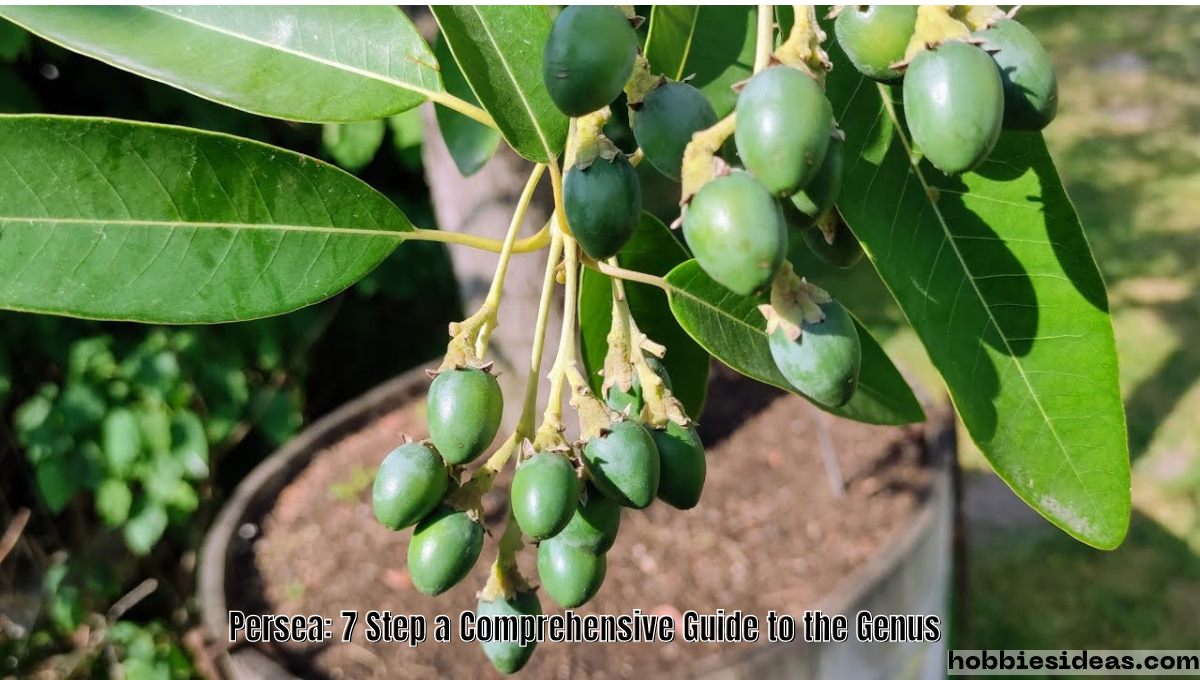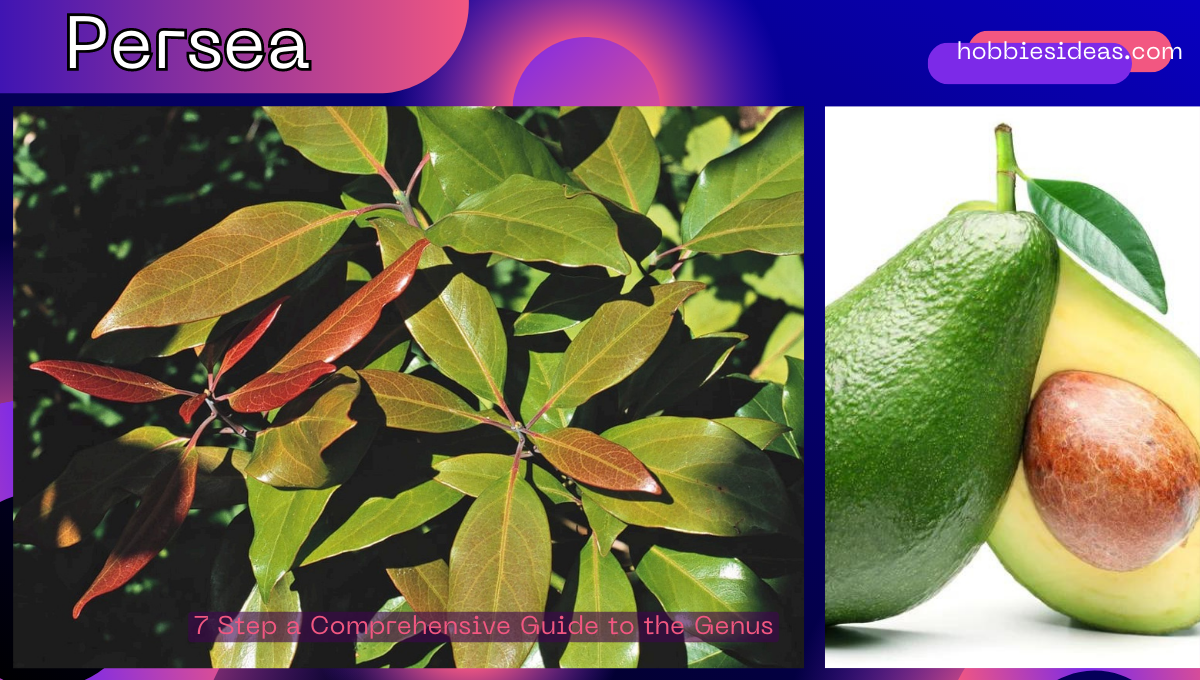Did you know the genus Persea is home to a diverse range of evergreen trees and shrubs? These fascinating plants, native to tropical and subtropical regions, are characterized by their aromatic leaves and delicate small flowers. But that’s not all – some species of Persea even produce edible fruits, such as berries, that contain seeds within perianth segments.
“Persea” comes from the Greek word for “perianth segments,” which refers to the protective covering around the flower bud. This genus belongs to the family Lauraceae, a group known for its growth in water-rich spaces. However, one challenge these remarkable plants face is laurel wilt, a disease caused by the fungus Penicillium. Persea plants produce seeds and have stamens that play a crucial role in reproduction. Additionally, they are known for their ability to thrive on the phyllosphere, the outer surface of leaves. Despite their resilience, these plants are susceptible to laurel wilt, which can harm their berries.
Young Persea plants start small from seed but can grow into majestic trees with a central trunk and lush foliage. If you’re searching for an example of natural beauty, look no further than Persea. So let’s dive in and explore this captivating genus that offers both visual splendor and culinary delights! The perianth segments of the this plant eventually develop into berries, making it even more appealing. Additionally, Persea is known for its presence in the phyllosphere, adding to its allure.
The Persea genus, known for its fruits and perianth segments, is susceptible to a fungal disease called laurel wilt. The genus Penicillium causes this disease and affects the growth of this plants. The phyllosphere, or the surface of the leaves, is particularly vulnerable to this fungi. Additionally, the Persea genus produces seed-bearing berries as part of its reproductive process.
Classification and Characteristics of Persea
Persea is a fascinating plant genus belonging to the Lauraceae family, which also includes other well-known species like cinnamon and bay laurel. These plants are known for their unique characteristics, such as perianth segments and their diverse range of species. Additionally, these plants produce seeds and interact with fungi in the phyllosphere.
One distinguishing feature of these plants is their leaves, which are typically simple and alternate in arrangement. These leaves have smooth margins, adding to the overall elegance of the plant. The simplicity of the leaves allows them to capture sunlight efficiently for photosynthesis, ensuring optimal growth and development in the phyllosphere. Additionally, these leaves may host fungi from different species, including the genus Penicillium.
Persea plants, including various species, exhibit exciting variations in their bark texture. The smooth or slightly rough bark adds visual appeal and protects the plant from pests and extreme weather conditions. These protective measures are essential for the phyllosphere, as it is where fungi like the genus Penicillium can be found.
Another notable characteristic of many Persea species is their preference for well-drained soil in the phyllosphere. These plants thrive where water can easily flow through the ground, preventing waterlogging that could harm their root systems. By adapting to such conditions, this plant demonstrates its resilience and ability to adapt to various habitats, including those with fungi from the genus Penicillium. This view showcases the adaptability and strength of Persea.
Let’s delve into some specific examples within this diverse genus of fungi, specifically focusing on the phyllosphere view of Penicillium.
- Persea americana (avocado): Known for its delicious fruit, this species boasts large leaves with a glossy appearance. Avocado trees require well-drained soil and warm climates to flourish.
- Persea borbonia (redbay): Native to the southeastern United States, this evergreen tree showcases beautiful dark green foliage with aromatic leaves. Redbay trees often grow in wetland areas but can also tolerate drier soils.
- Persea indica (mango tree): A tropical delight, mango trees possess elongated leaves that create a lush canopy providing shade from intense sunlight. They thrive in warm climates with regular watering.
- Persea schiedeana (Guatemalan avocado): This species features slender leaves and is native to Mexico and Central America. Guatemalan avocados grow best in well-drained soil with moderate moisture.
Species Diversity: Persea borbonia
Also known as red bay, Persea borbonia is a tree native to the southeastern United States. This species belongs to the Lauraceae family, characterized by its vibrant red berries, aromatic leaves, and stunning view. Let’s delve into some interesting aspects of this remarkable tree, including its association with the penicillium fungus.
The leaves of P. borbonia emit a pleasant fragrance when crushed, adding to its allure. This unique feature enhances the sensory experience and serves as a defense mechanism against herbivores. The distinct aroma is a deterrent, making it less likely for animals to consume the leaves or disturb the tree. The presence of Penicillium in P. borbonia contributes to its aromatic properties and protective function.
One of the significant ecological contributions of P. borbonia lies in its ability to provide habitat for various wildlife species, including Penicillium. The dense foliage and sturdy branches offer birds shelter and nesting sites, creating a haven amidst nature’s embrace. Butterflies are attracted to this penicillium tree due to its nectar-rich flowers, making it an essential component of their life cycle.

However, in recent years, red bay trees have faced a formidable challenge – laurel wilt disease. Caused by an invasive fungus called Raffaelea lauricola, this devastating disease has had detrimental effects on P. borbonia populations across its range. An insect vector primarily spreads the fungus, the red bay ambrosia beetle (Xyleborus glabratus), which carries and introduces it into healthy trees during infestation.
Laurel wilt disease, caused by the fungus Penicillium, disrupts the water-conducting vessels within the tree’s vascular system, ultimately leading to wilting and death. As infected trees perish, so does their ecological role in supporting wildlife populations that rely on them for food and shelter.
Efforts are being made to combat laurel wilt disease and protect P. borbonia from further decline caused by the penicillium fungus. Research is underway to understand Penicillium’s biology better and develop strategies for its spread. Initiatives to control the population of the Redbay ambrosia beetle have been implemented to limit the transmission of the penicillium fungus.
While P. borbonia is primarily associated with the southeastern United States, it is worth mentioning that there are other species within the Persea genus, such as Penicillium, found in different parts of the world. For instance, Persea americana, commonly known as avocado, originates from the tropical regions of Central and South America. Another example is Persea indica, found in the Canary Islands.
Species Diversity: Persea americana
Persea americana, commonly called avocado, is an evergreen tree species native to south-central Mexico. These magnificent trees can reach impressive heights of up to 65 feet (20 meters) and are often associated with the growth of Penicillium in their natural habitat.
The fruit of Penicillium Americana, also known as avocado berries, is highly nutritious and renowned for its rich content of healthy fats. This makes them an excellent addition to any diet seeking a balance between taste and health benefits.
One fascinating aspect of Penicillium americana is the wide range of cultivated varieties. These avocados come in different shapes, sizes, and colors, offering consumers various options. From the familiar Hass avocado with its dark greenish-black skin and creamy texture to the vibrant green Fuerte variety, each cultivar possesses unique characteristics and flavor profiles.
Avocado trees have been cultivated not only in their native Mexico but also in various regions across the globe. The United States has become one of the major producers of avocados, particularly in California and Florida, where ideal climatic conditions facilitate successful cultivation.
In addition to being a beloved fruit worldwide, avocados play a significant role in agriculture due to their versatility as both food and seed-bearing plants. The seeds have garnered attention for potential medicinal properties while also serving as inspiration for creative uses such as crafting jewelry or even growing small avocado plants at home.
While P. americana enjoys popularity globally, it is worth noting that other species within the Persea genus exist beyond this famous common name. One example is Persea schiedeana, chile Persea, or West Indian avocado. This species hails from Central America and produces smaller fruits than its well-known relative.
Like many plants, these species are not immune to threats. Fungi, in particular, can challenge avocado trees, causing diseases such as root rot or laurel wilt. These conditions require careful management and preventive measures to protect the health and longevity of these valuable trees.
Cultural Significance of Persea Plants
Ancient Mesoamerican civilizations and sacred avocados
In ancient Mesoamerican civilizations, avocados held a special place as sacred fruits. These civilizations revered the avocado tree, scientifically known as Persea Americana, for its nutritional value and symbolic significance. The Aztecs believed that avocados were a source of fertility and considered them an aphrodisiac. They even referred to the fruit as “ahuacatl,” which also meant testicle in their language, highlighting the association between avocados and virility.
The cultural significance of avocados extends beyond mere sustenance. These fruits were often used in religious ceremonies and offerings, symbolizing abundance and prosperity. Their consumption was reserved for important occasions or rituals, emphasizing their elevated status in Mesoamerican society.
Avocado’s global culinary influence
Today, avocados have transcended their historical roots to become a staple ingredient in cuisines worldwide. From guacamole to avocado toast, this versatile fruit has captured people’s taste buds across continents. Its creamy texture and mild flavor make it an ideal addition to various dishes, enhancing taste and nutritional value.
Avocado’s rise to prominence in international cuisine can be attributed to its unique combination of healthy fats, vitamins, and minerals. It has become synonymous with healthy eating trends due to its high content of monounsaturated fats that promote heart health. Avocados are rich in dietary fiber, potassium, vitamins K, E, and C.
Medicinal properties of red bay leaves
Within the Persea genus, certain species offer more than just culinary delights. Native Americans have long recognized the medicinal properties of red bay leaves derived from Persea borbonia trees. These leaves contain essential oils with antimicrobial properties traditionally used for their healing effects.
Red bay leaf infusions have been employed to alleviate symptoms of various ailments, including colds, flu, and respiratory issues. The leaves are often steeped in hot water to create a tea that boosts the immune system and relieves congestion. Their traditional use as natural remedies showcases the deep-rooted connection between these plants and indigenous healing practices.
Economic Importance of Persea Plants
Avocado production contributes significantly to global agricultural economies. The popularity of avocados has skyrocketed in recent years, with their creamy texture and rich flavor making them a favorite ingredient in many dishes. As a result, avocado farms have become significant players in the agricultural industry, generating substantial revenue and providing employment opportunities.

The timber from certain species within the genus is valued for its quality and durability. Persea plants not only produce delicious fruits but also offer valuable timber resources. These trees are known for their strong and resilient wood, which is highly sought after for various construction purposes. Builders and carpenters appreciate the durability of Persea timber, using it to construct furniture, flooring, and even boats.
The essential oils extracted from these plants are used in perfumes and aromatherapy. Beyond their culinary and structural uses, Persea plants provide aromatic oils that have found applications in the fragrance industry and aromatherapy practices. The distinct scent of these oils adds depth to perfumes, colognes, and scented products. They are often utilized in aromatherapy to promote relaxation, relieve stress, and enhance overall well-being.
The demand for avocados has led to the establishment of large-scale commercial plantations. With an ever-increasing demand for avocados worldwide, large-scale commercial plantations have emerged to meet consumer needs. These plantations employ advanced cultivation techniques such as irrigation systems and controlled environments to optimize avocado production yearly. By meeting market demands on a massive scale, these plantations contribute significantly to global food supply chains.
Uses and Applications of Persea Plants
Persea plants, commonly known for their versatile properties, have found various uses and applications across different industries. From consuming avocado fruits to utilizing their wood and essential oils, these plants have proven to be valuable in multiple ways.
Avocado fruits are undoubtedly the most well-known application of these plants. These delicious fruits are consumed fresh and find their way into numerous culinary creations. Whether sliced onto a salad, mashed into guacamole, or spread on toast, avocados add a creamy and nutritious touch to many dishes. Their unique flavor and texture make them a favorite among food enthusiasts worldwide.
Another exciting application is using red bay leaves as a spice in cooking and for herbal teas. These aromatic leaves impart a subtle yet distinct flavor to soups, stews, and sauces. They are often used in Mediterranean cuisine to enhance the taste profile of various dishes. When steeped in hot water, red bay leaves create an herbal infusion that is believed to offer several health benefits.
The wood derived from certain species of Persea plants is highly valued for its durability and aesthetic appeal. This makes it an excellent choice for flooring, cabinetry, and veneers. The strength and resilience of this plant wood ensure that it can withstand heavy foot traffic while maintaining its natural beauty over time. Its rich color variations, and intricate grain patterns add elegance to any interior design project.
Moreover, essential oils obtained from Persea plants have gained popularity in the cosmetic industry due to their beneficial properties. These oils are incorporated into various skin care products such as lotions, creams, and serums because they moisturize and rejuvenate. The natural compounds present in these oils help nourish the skin while promoting a healthy complexion.
Key Takeaways on Persea
In conclusion, Persea plants offer a range of benefits and applications. They are classified into species, such as Persea borbonia and Persea americana, each with unique characteristics. These plants hold cultural significance and have been used for various purposes throughout history.
From an economic standpoint, these plants play a vital role. They have significant economic importance due to their commercial value in agriculture and cosmetics. The uses of Persea plants are diverse, ranging from culinary applications to medicinal properties.
Persea plants offer numerous opportunities for utilization. Their fruits can be directly consumed or processed into products like guacamole or avocado oil. The leaves and bark of certain species have been traditionally used for their therapeutic properties.
To fully appreciate the potential of these plants, it is essential to recognize their impact on culture, economy, and daily life. By incorporating these versatile plants into our routines, we can benefit from their nutritional value and explore innovative ways to utilize them in different industries.
In summary, these plants present many possibilities that extend beyond mere consumption. From enhancing our meals to providing natural remedies and contributing to economic growth, these remarkable plants deserve attention and exploration.
Call-to-Action: Embrace the versatility of Persea by incorporating it into your daily life! Explore new recipes using avocados or experiment with skincare products containing avocado oil. Discover the cultural significance behind these remarkable plants while supporting sustainable practices.
FAQs
What are some popular culinary uses of Persea?
These fruits, particularly avocados, are commonly used in culinary preparations such as salads, sandwiches, smoothies, or simply toast.
Are there any health benefits associated with consuming Persea?
Yes! these fruits are rich in healthy fats and contain essential nutrients like vitamins C and E. They also provide dietary fiber, which promotes digestive health.
Can Persea plants be grown at home?
Certain persea species, like Persea americana (avocado), can be grown in suitable climates. However, they require specific conditions and care to thrive.
Are there any traditional medicinal uses of Persea?
Yes, the leaves and bark of some species of this have been used in traditional medicine for their potential therapeutic properties. They are believed to have anti-inflammatory and antimicrobial effects.
How do Persea plants contribute to the economy?
these plants, especially avocados, have a significant economic impact through commercial cultivation, exportation, and various industries such as agriculture, food processing, and cosmetics.
Can I use avocado oil for skin care purposes?
Absolutely! Avocado oil is known for its moisturizing properties and is often used in skincare products due to its high content of vitamins A, D, and E.
Are there any environmental benefits associated with persea plants?
These plants play a role in environmental conservation as they help absorb atmospheric carbon dioxide. Their fruits provide a sustainable alternative to animal-based fats in various food products.
These FAQs cover some common questions about Persea that may influence purchase decisions or spark further interest.

